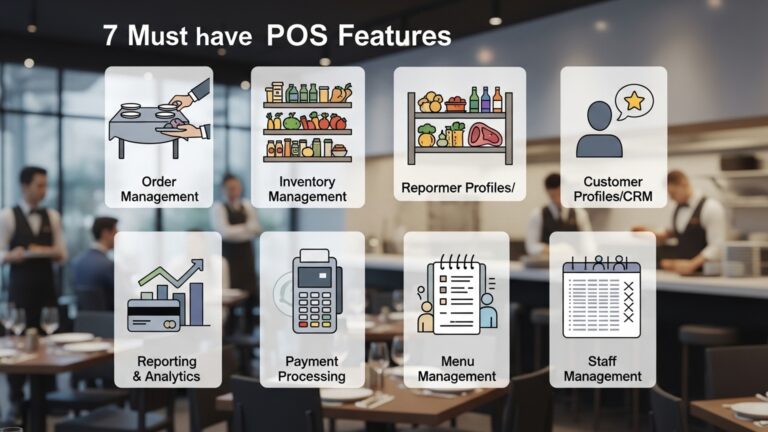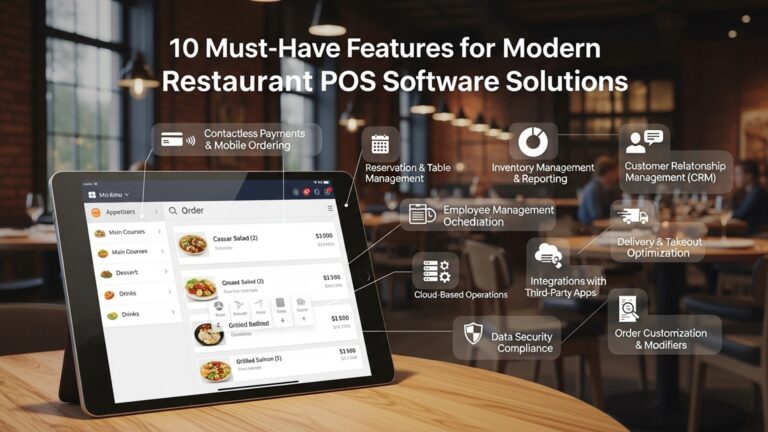5 Essential Strategies to Master Clothing Inventory Management Systems
The fashion retail landscape, intensely competitive and rapidly evolving, demands precision in every operational facet, especially the clothing inventory management system. With e-commerce continuing its exponential growth, compounded by dynamic consumer preferences for sustainability and immediate gratification, inefficient stock control no longer just dents profits; it erodes brand equity and fuels dead stock. Consider the challenge of a fast-fashion brand managing hundreds of SKUs across multiple channels, where a misstep in forecasting can lead to both overstocking unsold seasonal wear and missing out on trending viral items. Modern retailers now leverage real-time data analytics and AI-driven predictive models, moving beyond traditional spreadsheets to sophisticated platforms that optimize stock levels, manage returns efficiently. ensure seamless omnichannel fulfillment, fundamentally transforming operational agility and customer satisfaction.

Embrace Precision with Advanced Data Capture
At the heart of an effective clothing inventory management system lies accurate data. Without precise details about what you have, where it is. its condition, all subsequent strategies will falter. The foundation of this accuracy is advanced data capture technologies.
The Power of Barcodes, QR Codes. RFID
Barcodes: These ubiquitous optical machine-readable representations of data are the workhorses of retail inventory. Each unique product variant (e. g. , a specific style, size. color of a shirt) receives its own SKU (Stock Keeping Unit) and corresponding barcode. When an item is received, sold, or moved, scanning its barcode instantly updates your clothing inventory management system.
- How it works: A scanner reads the black and white lines, converting them into digital insights that identifies the product.
- Benefits: Cost-effective, widely adopted, fast data entry, significantly reduces human error compared to manual input.
QR Codes: Quick Response codes are two-dimensional barcodes capable of storing more data, including URLs, text, or larger product identifiers. While less common for direct inventory tracking than traditional barcodes, they can be useful for linking to detailed product insights or supplier data.
- How it works: Scanned by smartphone cameras or dedicated readers, they decode complex data.
- Benefits: Higher data capacity, versatile for customer engagement or internal insights access.
RFID (Radio-Frequency Identification): This technology takes inventory management to the next level, offering unparalleled speed and accuracy. RFID tags contain microchips that transmit data via radio waves to a reader, often without requiring line-of-sight.
- How it works: Small tags are attached to clothing items. Readers, which can be handheld or fixed at entry/exit points, send out radio waves that power the tag and read its unique identifier.
- Benefits:
- Rapid Counting: Thousands of items can be counted in minutes, ideal for large retail floors or warehouses.
- Real-time Visibility: Track items as they move through the supply chain, from manufacturing to sale.
- Reduced Shrinkage: Improved security and ability to locate misplaced items quickly.
- Enhanced Customer Experience: Faster checkouts and accurate stock availability for online orders.
Real-World Application: A Fashion Retailer’s Transformation
Consider “StyleVault,” a mid-sized fashion retailer struggling with frequent stockouts and overstocking despite using a basic clothing inventory management system. Their manual barcode scanning process was prone to errors, especially during peak seasons. By implementing RFID tags on all new merchandise and integrating RFID readers at their receiving docks and sales floors, StyleVault saw a dramatic improvement. Inventory counts that once took a team of five an entire day now take one person a few hours. This real-time accuracy feeds directly into their inventory system, allowing them to confidently promise online stock levels and drastically reduce the time spent searching for misplaced items.
Actionable Takeaway:
Invest in robust data capture technologies. While barcodes are a minimum, exploring RFID can provide a significant competitive advantage, especially for businesses with high inventory turnover or large product volumes. Ensure your chosen clothing inventory management system is compatible with these technologies.
Select the Right Clothing Inventory Management System
Choosing the appropriate clothing inventory management system is a critical decision that can define the efficiency and profitability of your fashion business. These systems are software solutions designed to track stock levels, orders, sales. deliveries, providing a comprehensive overview of your inventory.
Understanding Different System Types
Clothing inventory management systems come in various forms, each with its own advantages:
- Cloud-Based (SaaS – Software as a Service): These systems are hosted on the provider’s servers and accessed via the internet.
- Pros: Lower upfront cost, automatic updates, accessible from anywhere, scalable, robust data backup.
- Cons: Dependent on internet connection, less customization, subscription fees.
- On-Premise: Software installed and run on your company’s own servers and computers.
- Pros: High customization, full control over data, no reliance on internet for core functions.
- Cons: High upfront cost, requires IT staff for maintenance and updates, less accessible remotely.
- Integrated ERP (Enterprise Resource Planning) Modules: Larger businesses often use ERP systems that include inventory management as one of many integrated modules (alongside finance, HR, CRM).
- Pros: Seamless data flow across all business functions, single source of truth.
- Cons: Complex to implement, very high cost, often overkill for smaller businesses.
- Standalone Systems: Dedicated solely to inventory management, often integrating with other systems via APIs.
- Pros: Focused functionality, potentially easier to use for inventory-specific tasks, often more affordable than ERPs.
- Cons: Requires integration efforts with other business tools.
Comparison: Cloud-Based vs. On-Premise
| Feature | Cloud-Based (SaaS) | On-Premise |
|---|---|---|
| Cost | Subscription-based (lower upfront) | High upfront license + hardware |
| Maintenance | Managed by provider | Requires internal IT team |
| Accessibility | Anywhere with internet | Limited to local network (unless VPN) |
| Scalability | Easily scales up/down with subscription tiers | Requires hardware upgrades, more complex |
| Updates | Automatic by provider | Manual, often costly for new versions |
| Security | Provider responsible, typically high standards | Your responsibility, can be complex |
Key Features to Look For:
When evaluating a clothing inventory management system, prioritize these functionalities:
- Real-time Tracking: See current stock levels across all locations.
- SKU Management: Efficiently categorize products by style, size, color, material, etc.
- Order Management: Track purchase orders from suppliers and sales orders from customers.
- Multi-Location Support: Manage inventory across warehouses, retail stores. e-commerce fulfillment centers.
- Reporting & Analytics: Generate insights on sales trends, best-selling items, slow-movers. inventory turnover.
- Integration Capabilities: Connects seamlessly with POS (Point of Sale), e-commerce platforms (Shopify, WooCommerce), accounting software (QuickBooks). shipping carriers.
- Returns Management: Streamline the process of handling customer returns and restocking.
- Supplier Management: Track supplier performance and lead times.
Actionable Takeaway:
Conduct a thorough needs assessment. What are your current pain points? What are your growth projections? Prioritize a system that offers robust features, excellent integration capabilities. scalability. Don’t underestimate the importance of user-friendliness and ongoing support from the vendor.
Implement Robust Inventory Auditing & Cycle Counting
Even the most sophisticated clothing inventory management system isn’t foolproof without regular auditing. Discrepancies can arise from human error, theft, damage, or misplacement. To maintain the integrity of your inventory data and prevent costly issues like stockouts or overstocks, a systematic approach to auditing is essential.
The Challenge of Inaccuracy
Inventory shrinkage – the loss of inventory due to factors like shoplifting, employee theft, administrative errors. vendor fraud – is a significant concern in retail. According to the National Retail Federation’s 2023 National Retail Security Survey, shrink accounted for $112. 1 billion in losses in 2022, representing 1. 6% of retail sales. While not all shrink is due to internal issues, inaccurate inventory records certainly contribute to the problem, making it harder to identify the root cause of losses.
Cycle Counting vs. Physical Inventory
- Physical Inventory (Wall-to-Wall): This traditional method involves shutting down operations, counting every single item in your entire inventory. comparing it to your clothing inventory management system’s records.
- Pros: Provides a complete snapshot of all inventory.
- Cons: Highly disruptive, labor-intensive, often leads to significant operational downtime. errors can still occur due to fatigue.
- Cycle Counting: A continuous inventory auditing procedure where a small, specific segment of inventory is counted on a regular, rotating basis, rather than counting everything at once.
- Pros:
- Minimal Disruption: Operations can continue while counting occurs.
- Higher Accuracy: Smaller counts are less prone to error.
- Early Problem Detection: Discrepancies are found and corrected more quickly.
- Improved Inventory Records: Continuously refines the accuracy of your clothing inventory management system.
- Reduced Need for Full Physical Counts: In many cases, cycle counting can replace annual physical inventories entirely.
- Cons: Requires consistent effort and a well-defined process.
- Pros:
Implementing an Effective Cycle Counting Program (ABC Analysis)
A common and highly effective method for cycle counting is ABC analysis, which categorizes inventory items based on their value, sales volume, or importance.
- A-Items (High Value/High Volume): These are your most critical items, representing a small percentage of your total inventory but a large percentage of your sales or value (e. g. , designer dresses, best-selling jeans).
- Counting Frequency: Count frequently (e. g. , weekly or bi-weekly).
- B-Items (Medium Value/Medium Volume): These items fall in between A and C, representing a moderate portion of your inventory and sales (e. g. , standard t-shirts, accessories).
- Counting Frequency: Count less frequently than A-items (e. g. , monthly or quarterly).
- C-Items (Low Value/Low Volume): These are your least critical items, making up a large percentage of your inventory but a small percentage of your sales or value (e. g. , socks, basic staples).
- Counting Frequency: Count least frequently (e. g. , once or twice a year).
Real-World Example: “Urban Threads” Boutique
“Urban Threads,” a popular boutique, initially relied on a once-a-year physical inventory count, which always revealed significant discrepancies and caused a week-long store closure. After switching to a cycle counting program integrated with their clothing inventory management system, they categorized their inventory. Their “A” items (new arrivals, limited edition collections) are counted weekly. “B” items (seasonal basics) are counted monthly. “C” items (accessories, clearance) quarterly. This continuous process not only improved inventory accuracy from 80% to over 98% but also allowed them to identify and address issues like mislabeled items or processing errors much faster, saving countless hours and preventing lost sales.
Actionable Takeaway:
Adopt cycle counting as a cornerstone of your inventory management. Utilize your clothing inventory management system’s reporting features to identify high-value or high-movement items for more frequent counts. Train staff thoroughly on counting procedures and discrepancy resolution to ensure the integrity of the data.
Leverage Data Analytics for Smarter Forecasting
In the fast-paced world of fashion, predicting demand is both an art and a science. Overstocking leads to markdowns, storage costs. wasted capital, while understocking results in lost sales and frustrated customers. A sophisticated clothing inventory management system, when combined with robust data analytics, can transform guesswork into calculated predictions.
The Challenge of Fashion Volatility
Fashion trends are notoriously fickle, influenced by social media, celebrity endorsements, economic shifts. even global events. This volatility makes accurate forecasting incredibly challenging. But, by analyzing historical data and external factors, businesses can significantly improve their predictive accuracy.
Key Data Points for Forecasting:
Your clothing inventory management system collects a wealth of data that is invaluable for forecasting:
- Sales History: Look at past sales for specific SKUs, categories. overall trends. examine daily, weekly, monthly. yearly patterns.
- Seasonal Trends: Identify recurring peaks and troughs related to seasons (Spring/Summer, Autumn/Winter), holidays (Christmas, Valentine’s Day). cultural events.
- Promotional Impact: How did sales react to past discounts, marketing campaigns, or collaborations?
- Website Traffic & Engagement: For e-commerce, spikes in product page views or wish list additions can signal upcoming demand.
- Returns Data: High return rates for certain items might indicate issues with sizing, quality, or fit, impacting future net sales.
- External Factors: Economic indicators, weather forecasts (for outerwear), social media trends. competitor activities can all play a role.
From Data to Insight: Predictive Analytics
Modern clothing inventory management systems, or integrated business intelligence tools, can employ various analytical techniques:
- Time-Series Analysis: Examines data points collected over a period of time to identify patterns and predict future values (e. g. , ARIMA models).
- Regression Analysis: Identifies relationships between a dependent variable (demand) and independent variables (price, promotions, season).
- Machine Learning (ML) Algorithms: Advanced algorithms can learn from vast datasets, identifying complex patterns that human analysts might miss. They can adapt and improve their predictions over time as more data becomes available.
// Simplified example of a basic moving average calculation for demand forecasting function calculateMovingAverage(salesData, periods) { let forecast = []; for (let i = periods - 1; i < salesData. length; i++) { let sum = 0; for (let j = 0; j < periods; j++) { sum += salesData[i - j]; } forecast. push(sum / periods); } return forecast; } // Example Usage: Monthly sales for 6 months const monthlySales = [120, 130, 110, 140, 150, 160]; const threeMonthMovingAverage = calculateMovingAverage(monthlySales, 3); // This forecast would then be used to inform ordering decisions for the next period.
Real-World Application: “TrendSetter Apparel”
“TrendSetter Apparel,” an online fashion brand, used to rely heavily on buyer intuition, often leading to either massive end-of-season clearance sales or frustrating “sold out” messages for popular items. By integrating a sophisticated analytics module into their clothing inventory management system, they began analyzing not just sales. also website search queries, social media mentions of specific styles. even fashion blog trends. This allowed them to predict the demand for certain colors and silhouettes with much greater accuracy, leading to a 20% reduction in excess inventory and a 15% increase in sales of popular items due to improved stock availability. They now use these insights to optimize their purchasing, ensuring they have the right styles in the right quantities at the right time.
Actionable Takeaway:
Don’t just collect data – assess it. Leverage the reporting and analytics features of your clothing inventory management system. Consider investing in specialized forecasting tools or integrating with data science platforms if your business complexity demands it. Regularly review forecast accuracy and adjust your models to continually improve your predictions.
Integrate Your Supply Chain for Seamless Operations
Mastering your clothing inventory management system isn’t just about what happens within your four walls; it’s about seamlessly connecting with your entire supply chain. From suppliers and manufacturers to warehouses, retail stores. e-commerce platforms, an integrated approach ensures data flows freely, reducing delays, errors. ultimately, costs.
The Vision: End-to-End Visibility
An integrated supply chain means that insights about inventory, orders. sales is shared in real-time across all relevant parties. This creates a transparent, efficient ecosystem where each component works in harmony with the others.
Key Integration Points:
- Suppliers/Manufacturers:
- Benefit: Automated purchase order (PO) generation based on low stock levels, real-time updates on production status and shipping, reduced lead times. better relationship management.
- Technology: EDI (Electronic Data Interchange) for structured document exchange, or API (Application Programming Interface) integrations for more flexible, real-time data sharing.
- Warehouses/3PLs (Third-Party Logistics):
- Benefit: Automated pick-pack-ship instructions, real-time stock updates as items are received or shipped, accurate location tracking within the warehouse. optimized storage.
- Technology: WMS (Warehouse Management System) integrated with your clothing inventory management system, often via APIs.
- Point-of-Sale (POS) Systems:
- Benefit: Instantaneous inventory deduction upon sale, real-time visibility of stock levels across all retail locations, streamlined returns processing.
- Technology: Direct API integration between POS and your clothing inventory management system.
- E-commerce Platforms (e. g. , Shopify, Magento):
- Benefit: Accurate online stock availability to prevent overselling or underselling, automatic order fulfillment triggers, synchronized product details.
- Technology: Native connectors or API integrations are crucial for real-time sync.
- Accounting Software (e. g. , QuickBooks, Xero):
- Benefit: Automated cost of goods sold (COGS) calculations, simplified reconciliation, accurate financial reporting.
- Technology: API integration to push sales, purchase. inventory adjustment data.
Understanding APIs and EDI
-
API (Application Programming Interface): Think of an API as a waiter in a restaurant. You (your clothing inventory management system) tell the waiter (API) what you want (e. g. , “get stock level for SKU 123 from the warehouse system”). The waiter takes your request to the kitchen (warehouse system), gets the details. brings it back to you. APIs allow different software applications to communicate and share data in real-time, offering flexibility and modern connectivity.
// Simplified conceptual API call for checking stock fetch('https://api. yourwarehouse. com/inventory/SKU123'). then(response => response. json()). then(data => console. log('Current Stock:', data. quantityAvailable)). catch(error => console. error('Error fetching inventory:', error)); -
EDI (Electronic Data Interchange): This is a more traditional, standardized method for exchanging business documents (like purchase orders, invoices, shipping notices) between different companies electronically. While less flexible than APIs, EDI is highly reliable and widely used in large-scale supply chain operations, especially with major retailers and manufacturers.
Real-World Example: “Global Garb” Fashion Brand
“Global Garb” is a vertically integrated fashion brand that designs, manufactures. sells its clothing through both its own retail stores and an extensive e-commerce presence. Their master clothing inventory management system is integrated with every part of their operation. When a new collection is designed, specifications are sent via EDI to their manufacturing partners. As products are produced, updates on quantities and expected delivery dates flow back into their system. Once items arrive at their distribution center, the WMS updates the inventory system in real-time. When a customer buys a dress online, the order is automatically sent to the nearest fulfillment center, stock is deducted from the system. shipping notifications are triggered. If a retail store is low on a popular item, the system automatically suggests a transfer from another store or a reorder from the warehouse. This seamless integration has drastically reduced stockouts, optimized logistics costs. significantly improved customer satisfaction.
Actionable Takeaway:
Prioritize a clothing inventory management system that offers robust integration capabilities. Map out your entire supply chain and identify all critical touchpoints where data needs to be shared. Invest in the necessary integrations, whether through native connectors, APIs, or EDI, to create a truly connected and efficient operation. A well-integrated system is your backbone for scaling and agility.
Conclusion
Mastering clothing inventory management isn’t just about counting items; it’s about orchestrating your entire retail ecosystem for maximum profitability and customer delight. The strategies we’ve explored are your roadmap to preventing common pitfalls, like those seasonal cashmere collections gathering dust or missing out on peak demand for trending denim. From my own experience, I’ve seen firsthand how a meticulous approach, leveraging current trends like AI-driven forecasting and omnichannel integration, can transform a struggling boutique into a thriving enterprise. Your actionable next step is to audit your current system, identify its weak points. commit to consistent, data-driven adjustments. Don’t be afraid to embrace new technologies, like RFID for faster cycle counts, as they offer unparalleled accuracy. My personal tip? Treat your inventory data like gold; it reveals invaluable insights into customer preferences and operational bottlenecks. By proactively managing your stock, you’re not just saving costs; you’re building a resilient, responsive business poised for sustained growth in today’s dynamic fashion market.
More Articles
How to Select the Perfect POS Software for Your Retail Business Needs
Unlock Efficiency 8 Vital Multi Outlet Clothing POS System Tips for Success
Discover 9 Smart Ways Apparel Store Billing Software Boosts Retail Sales
How to Choose and Implement POS Software for Retail Success
How to Master POS Billing Software for Efficient Retail Operations
FAQs
Why is having a solid inventory system so crucial for a clothing business?
It’s super crucial because it stops you from running out of popular items, which means lost sales. also prevents you from having too much unsold stock tying up your cash and space. , it helps you have the right clothes available at the perfect time.
What’s a common struggle clothing brands face with their stock. how can they tackle it?
A very common headache is inaccurate stock counts, which can lead to either overselling something you don’t have or thinking you’re out when you actually have items in the back. Tackling this requires implementing a robust system with regular physical audits and using technology for real-time tracking.
Do I really need special software to keep track of my clothing inventory effectively?
While you might start small, using some form of dedicated inventory management software is a huge game-changer as you grow. It automates tracking, helps with demand forecasting, streamlines reordering. provides insights that manual methods simply can’t match, saving you tons of time and preventing errors.
How can I get better at predicting what clothes my customers will actually want to buy?
This is where demand forecasting comes in! It involves analyzing past sales data, current fashion trends, seasonal shifts. even upcoming events or promotions. Using these insights helps you make smarter purchasing decisions, reducing guesswork and ensuring you stock what’s hot.
What’s the best way to deal with clothing items that just aren’t selling?
Don’t let them sit forever! Strategies include running targeted promotions, bundling slow-movers with popular items, or even considering liquidation or donation. The key is to address dead stock quickly to free up capital and valuable storage space for new, faster-moving inventory.
What’s a quick win for making my inventory process smoother right away?
One quick win is to standardize your receiving process. Make sure every single item that comes in is immediately checked against the order, accurately counted. tagged consistently. This prevents errors from the very start and ensures your inventory records are correct from day one.
How do customer returns impact my inventory management. what should I do?
Customer returns significantly impact your inventory by bringing items back into stock. You need a clear, efficient process to inspect returned items, determine if they’re restockable. then quickly reintegrate them or remove them from your active inventory. This ensures your stock levels remain accurate and saleable items don’t just sit in limbo.





